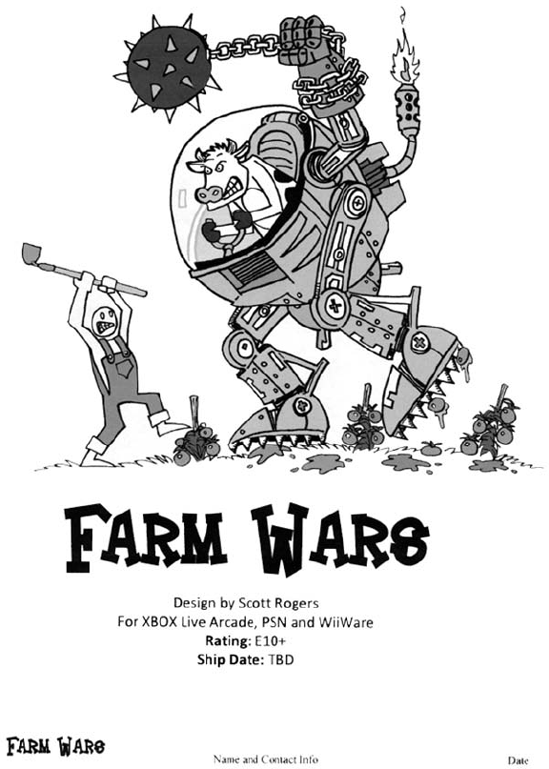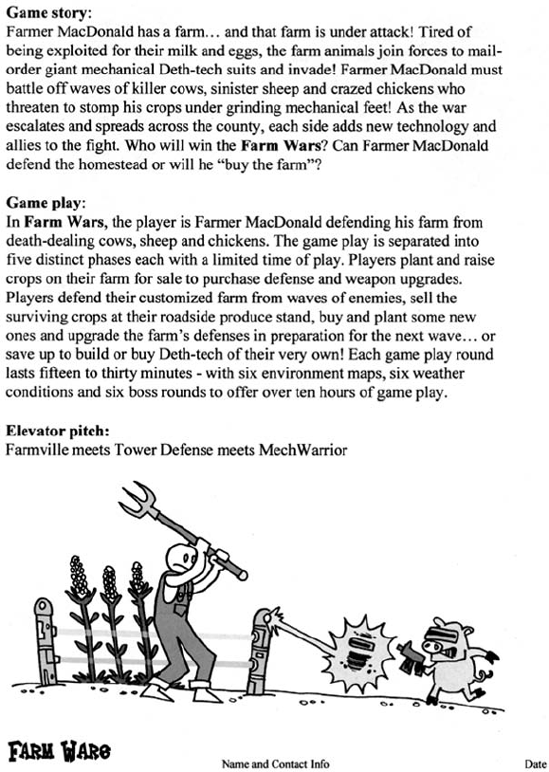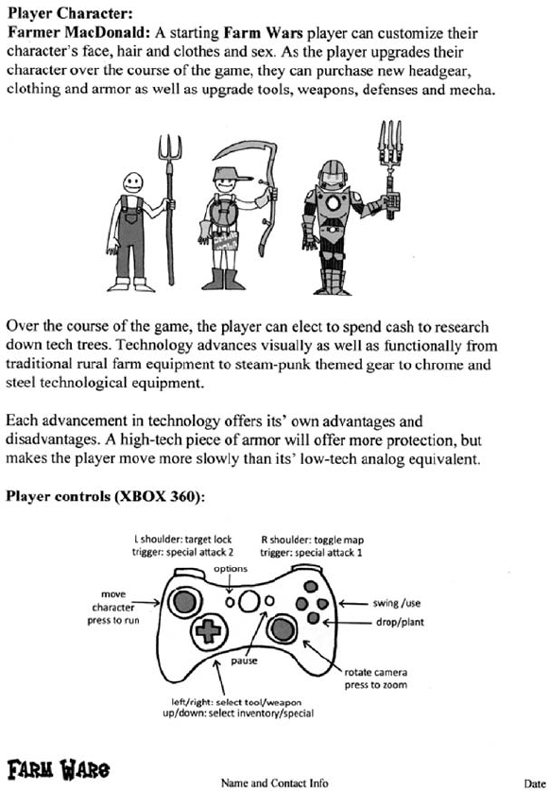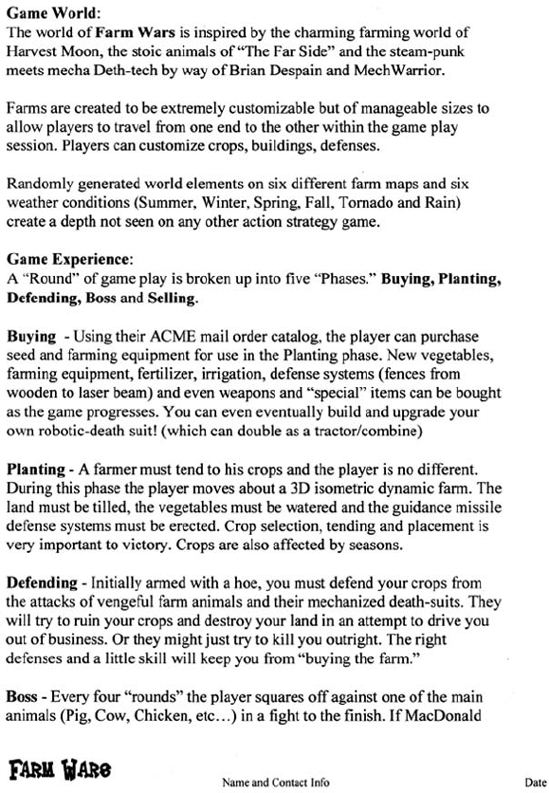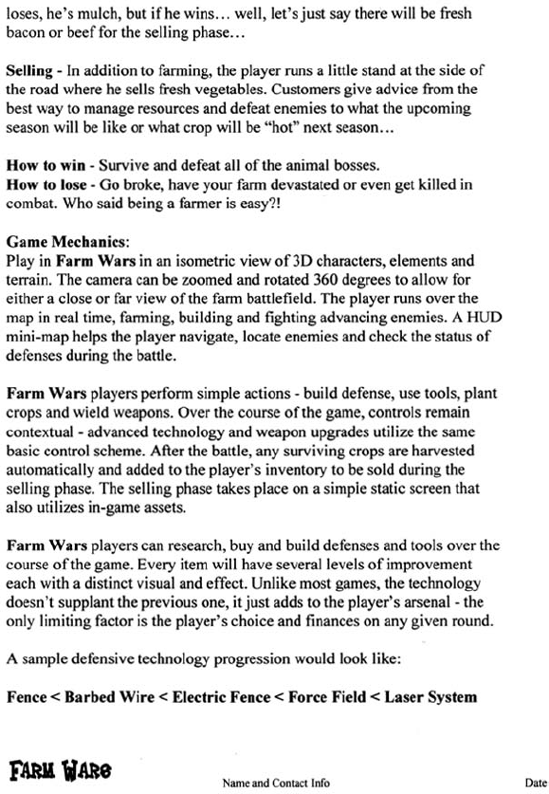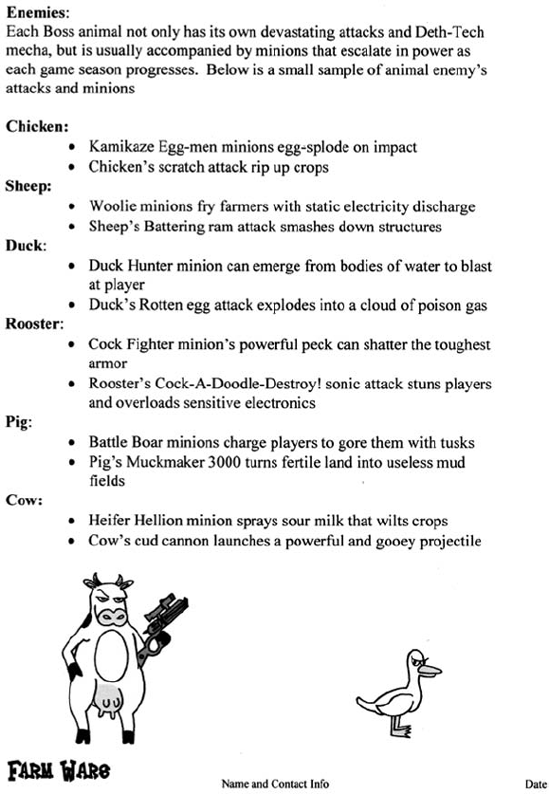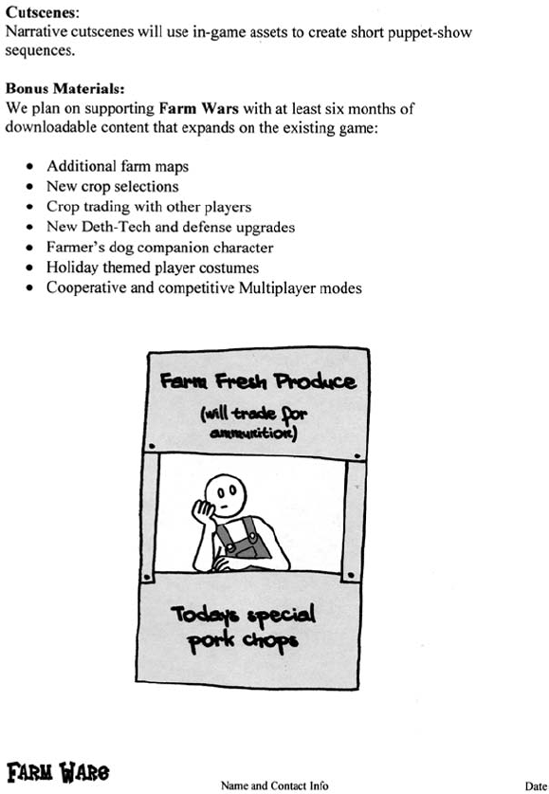The Ten Pager
The ten pager is a “broad stroke” design document that lays out the spine of your game. It is intended to be a quick read, allowing readers to understand the basics of the game without getting bogged down in the details.
What’s important is that all the broad strokes of information are included and the document is accessible and exciting to read. The foundation of this document will turn into your pitch and GDD.
Page 1: Title Page
Include a graphic if possible, a title (preferably a logo) and your contact information, target platform, target audience, target rating, and expected shipping date.
Page 2: Story and Gameplay
Page 2 should include a few short paragraphs about the story (beginning, middle, and ending … or at least a cliffhanger) mentioning the setting, the characters, and the conflict. Gameplay description should give a brief idea of the flow of the game—break it into stages or bullet points if its easier to convey info that way.
Page 3: Game Flow
How does the player grow as the challenges increase? How does this tie into the story? Briefly describe how these systems will work (experience points, money, score, collectibles) and what the player gains as they grow (new abilities, weapons, additional moves, unlockables).
Page 4: Character(s) and Controls
Who does the player control? What is his/her/its story? What can they do that is unique/special to this game? Can the player do several types of activities? (Driving, shooting, and so on.) Does the player ever change characters? What is the difference in play?
Show control mapping highlighting some of the special/unique moves to this product. Include image of SKU’s controller for reference.
Page 5: Main Gameplay Concepts and Platform Specific Features
What kind of play does the player engage in? What genres are they? (Driving, shooting, platform, and so on.) How is the sequence of play broken up? (Levels? Rounds? Story chapters?) If there are multiple minigames, list them out by name and give short descriptions. If there are specific cool gameplay scenarios, list them. USPs from the concept overview should be included and briefly detailed here. Diagrams are good to illustrate game concepts.
What game features are unique and capitalize on the platform’s hardware? (Hard drive, touch screen, multiple screen, memory card, and so on.) Provide examples.
Page 6: Game World
Where does the gameplay take place? List the environments the player will visit with short descriptions. How do they tie into the story? What mood is being evoked in each world? How are they connected? (Linear or hub-style navigation?) Include a simple flow diagram of how the player would navigate the world.
Page 7: Interface
How does the player navigate the shell of the game? What mood is evoked with the interface screens? What music is used? Include a simple flow diagram of how the player will navigate the interface.
Page 8: Mechanics and Power-ups
Gameplay mechanics. What unique mechanics are in the game? How do they relate to the player’s actions? How will they be used in the environment?
Power-ups. If applicable, what kind of power-ups/collectibles can the player collect? What are the benefits of collecting them? Can they be used to buy items, abilities, and so on?
Page 9: Enemies and Bosses
Enemies. If applicable, what kind of enemies does the player face? What kind of cool attacks do they have? Describe the enemy AI. What makes them unique?
Bosses. If applicable, what kind of boss characters does the player face? What environments do they appear in? How does the player defeat them? What does the player get for defeating them?
Page 10: Cutscenes, Bonus Material, and Comps
How are the cutscenes going to be presented? When do they appear; in between levels? At the beginning and end of the game? What format have they been created in? (CG? Flash? Puppet show?)
What material will the player be able to unlock? What incentive is there for the player to play again?
What other games will be your competition upon market release
Example
